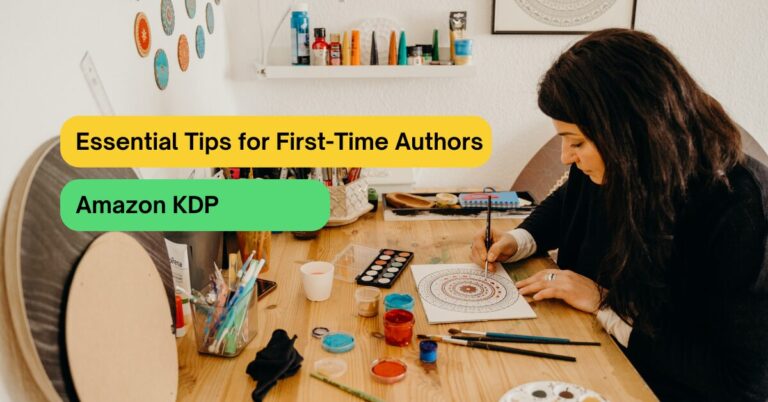Unlocking Your Potential: Effective Business Communication Techniques You Need
Outline of the Article: Business Communication Techniques
- Introduction
- Importance of effective business communication
- Overview of what the article will cover
- Understanding the Basics of Business Communication
- Definition and significance
- Elements of effective communication
- Types of Business Communication
- Verbal communication
- Written communication
- Non-verbal communication
- Key Principles of Effective Business Communication
- Clarity and conciseness
- Active listening
- Feedback and clarification
- Improving Verbal Communication Skills
- Speaking clearly and confidently
- Using appropriate language and tone
- Techniques for effective presentations
- Enhancing Written Communication Skills
- Writing clear and concise messages
- Formatting and structuring emails and reports
- Proofreading and editing tips
- Understanding Non-Verbal Communication Cues
- Body language and gestures
- Facial expressions and eye contact
- Dress code and appearance
- Overcoming Barriers to Communication
- Language barriers
- Cultural differences
- Psychological barriers
- Technological Tools for Effective Communication
- Email management software
- Video conferencing tools
- Collaborative platforms
- Building Interpersonal Relationships through Communication
- Importance of trust and respect
- Conflict resolution techniques
- Team building exercises
- Impact of Effective Communication on Business Success
- Increased productivity and efficiency
- Enhanced customer relations
- Improved decision-making processes
- Case Studies of Successful Communication Strategies
- Real-life examples from companies
- Analysis of what worked well
- Future Trends in Business Communication
- AI and automation in communication
- Virtual reality and augmented reality
- Predictions for the next decade
- Conclusion
- Recap of the importance of effective business communication
- Final thoughts and encouragement to implement strategies
- FAQs (Frequently Asked Questions)
- What are the main barriers to effective business communication?
- How can active listening improve business communication?
- Which non-verbal cues are most important in business settings?
- What are some common mistakes to avoid in email communication?
- How can businesses adapt to global communication challenges?

Unlocking Your Potential: Effective Business Communication Techniques You Need
Introduction – Business Communication Techniques
In today’s dynamic business environment, effective communication stands as a cornerstone of success. Whether you’re leading a team, collaborating with clients, or managing stakeholders, mastering communication techniques can unlock your potential and drive organizational growth.
Understanding the Basics of Business Communication
Effective business communication goes beyond exchanging information; it fosters understanding, builds relationships, and propels businesses forward. It encompasses verbal, written, and non-verbal elements, each playing a crucial role in conveying messages clearly and concisely.
Types of Business Communication Techniques
Verbal Communication
Verbal communication involves spoken words and vocal tones. Mastering clarity, articulation, and appropriate language ensures your message is understood and impactful.
Written Communication
Written communication spans emails, reports, and documentation. Structuring information logically, using proper grammar, and choosing the right tone enhances readability and professionalism.
Non-Verbal Communication
Non-verbal cues such as body language, facial expressions, and attire can significantly influence how messages are perceived. Being aware of and controlling these cues enhances interpersonal interactions.
Key Principles of Effective Business Communication Techniques
Clarity and Conciseness
Clear, concise communication eliminates ambiguity and ensures everyone understands the intended message.
Active Listening
Engaging in active listening shows respect and enhances understanding by focusing on the speaker’s words and underlying emotions.
Feedback and Clarification
Regular feedback loops and seeking clarification prevent misunderstandings and promote continuous improvement in communication practices.
Improving Verbal Communication Skills – Business Communication Techniques
Speaking Clearly and Confidently
Articulating thoughts clearly and confidently builds credibility and engages listeners effectively.
Using Appropriate Language and Tone
Adapting language and tone to suit the audience and context ensures messages resonate positively.
Techniques for Effective Presentations
Structuring presentations logically, using visuals effectively, and engaging the audience fosters impactful communication during presentations.
Enhancing Written Communication Skills – Business Communication Techniques
Writing Clear and Concise Messages
Crafting concise emails and reports improves readability and ensures key points are understood promptly.
Formatting and Structuring Emails and Reports
Organizing information logically with headings, bullet points, and summaries enhances readability and comprehension.
Proofreading and Editing Tips
Thorough proofreading and editing catch errors and improve the overall quality and professionalism of written communications.
Understanding Non-Verbal Communication Cues – Business Communication Techniques
Body Language and Gestures
Positive body language, such as open gestures and posture, enhances rapport and credibility in face-to-face interactions.
Facial Expressions and Eye Contact
Maintaining appropriate facial expressions and eye contact conveys sincerity and attentiveness in conversations.
Dress Code and Appearance
Presenting oneself professionally through attire and grooming reinforces a positive impression in business settings.
Overcoming Barriers to Communication – Business Communication Techniques
Language Barriers
Navigating language differences requires patience, clarity, and sometimes the use of translation tools to ensure mutual understanding.
Cultural Differences
Respecting cultural norms and adapting communication styles fosters inclusivity and reduces misunderstandings in diverse teams.
Psychological Barriers
Addressing emotional barriers such as anxiety or mistrust through empathy and active listening promotes open communication.
Technological Tools for Effective Communication – Business Communication Techniques
Email Management Software
Organizing emails efficiently with tools like Gmail filters and folders streamlines communication and enhances productivity.
Video Conferencing Tools
Platforms like Zoom and Microsoft Teams facilitate virtual meetings, improving collaboration and reducing travel costs.
Collaborative Platforms
Using tools like Slack and Microsoft SharePoint fosters real-time collaboration and document sharing among teams.
Building Interpersonal Relationships through Communication – Business Communication Techniques
Importance of Trust and Respect
Establishing trust through transparent communication builds strong relationships and fosters teamwork.
Conflict Resolution Techniques
Addressing conflicts promptly and respectfully resolves issues and strengthens team dynamics.
Team Building Exercises
Engaging in team-building activities improves communication, fosters camaraderie, and enhances collaboration.
Impact of Effective Communication on Business Success
Increased Productivity and Efficiency
Clear communication reduces errors and misunderstandings, leading to streamlined processes and increased productivity.
Enhanced Customer Relations
Building rapport through effective communication strengthens customer loyalty and satisfaction.
Improved Decision-Making Processes
Clarity in communication ensures stakeholders are well-informed, leading to better decisions and outcomes.
Case Studies of Successful Communication Strategies
Real-Life Examples from Companies
Examining case studies like Apple’s product launches or Zappos’ customer service highlights effective communication strategies in action.
Analysis of What Worked Well
Identifying key factors such as transparency, timeliness, and audience engagement that contributed to successful outcomes.
Future Trends in Business Communication
AI and Automation in Communication
Advancements in AI-powered chatbots and automated customer service revolutionize how businesses interact with customers.
Virtual Reality and Augmented Reality
VR and AR technologies enhance remote collaboration and training, creating immersive communication experiences.
Predictions for the Next Decade
Anticipating shifts towards more personalized and interactive communication methods driven by technological innovations.
Conclusion
Mastering effective business communication techniques is not just about transmitting information; it’s about building relationships, fostering innovation, and driving organizational success. By honing your verbal, written, and non-verbal skills, you can unlock your potential to communicate confidently and effectively in any business context.

FAQs (Frequently Asked Questions) Business Communication Techniques
- What are the main barriers to effective business communication?
- Language barriers, cultural differences, and psychological factors like anxiety or mistrust can hinder effective communication.
- How can active listening improve business communication?
- Active listening demonstrates respect and understanding, leading to clearer communication and stronger relationships.
- Which non-verbal cues are most important in business settings?
- Body language, facial expressions, and eye contact are critical non-verbal cues that influence how messages are perceived.
- What are some common mistakes to avoid in email communication?
- Common mistakes include unclear subject lines, overly casual language, and forgetting to proofread before sending.
- How can businesses adapt to global communication challenges?
- Businesses can adapt by embracing diversity, using translation tools when necessary, and providing cultural sensitivity training.
Thanks for reading this article
Please share your thoughts and suggestions on the comments field if we missout any information we will improve our writing skills.







2 Comments